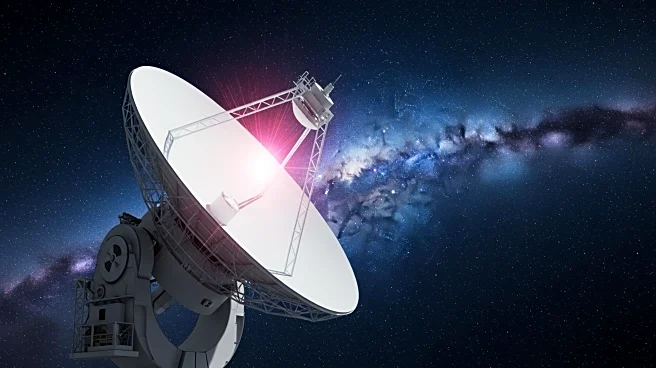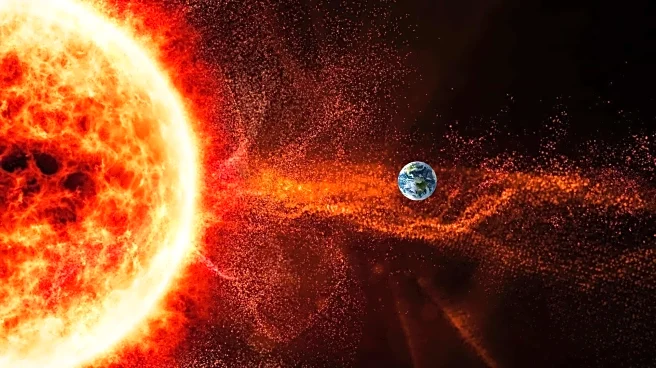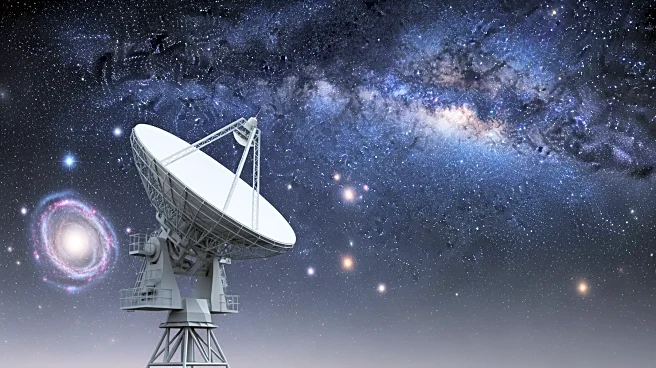What's Happening?
Astronomers have confirmed the first definitive observation of a coronal mass ejection (CME) from a star beyond our sun, located 130 light-years away. Using the Low Frequency Array (LOFAR) radio telescope
in the Netherlands, researchers detected radio waves emitted by the CME as it traveled through space. This breakthrough provides evidence that material can escape the gravitational and magnetic pull of distant stars, a phenomenon previously only hinted at in scientific literature.
Why It's Important?
This discovery has significant implications for understanding the behavior of stars and the potential habitability of exoplanets. CMEs can have powerful effects, such as stripping atmospheres from planets, which could impact the development of life. The ability to detect and study these events on distant stars enhances our knowledge of stellar dynamics and the conditions that might support life elsewhere in the universe. It also highlights the importance of radio astronomy in expanding our understanding of cosmic phenomena.












